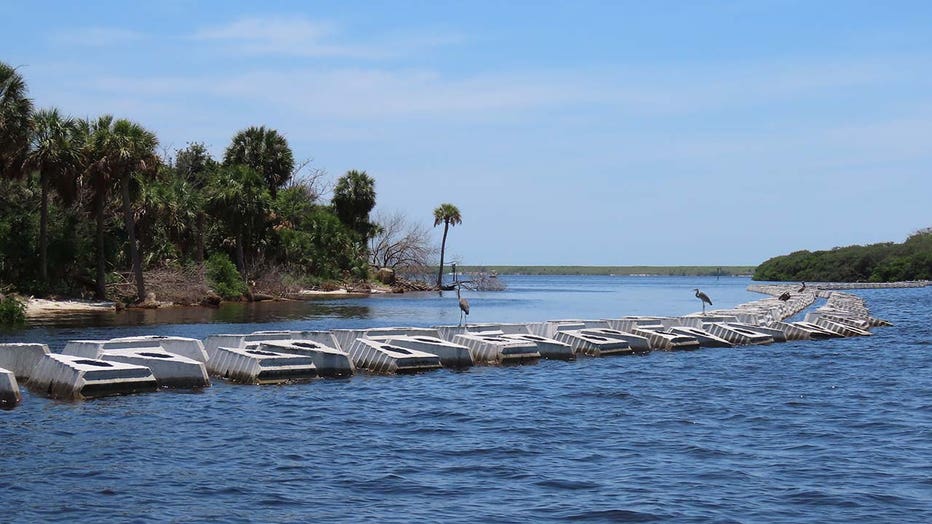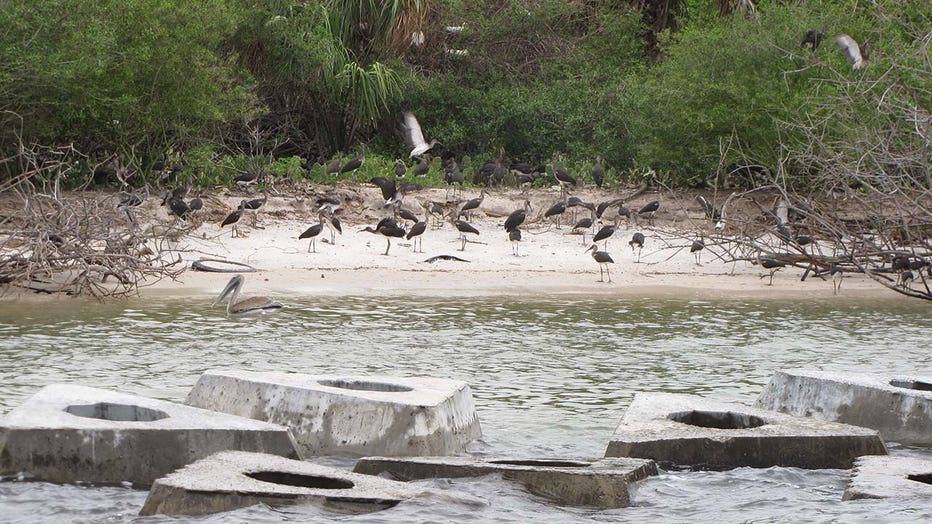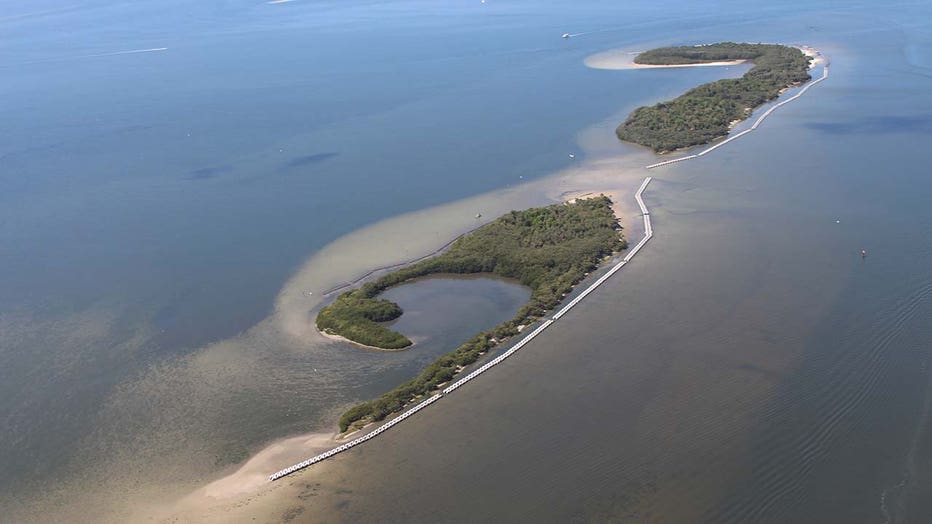Audubon Florida builds living shoreline to protect local critical wildlife coastline from erosion

Living shoreline protects the coastline
Sea level rise is threatening coastal communities and wildlife. Here in Tampa Bay, experts believe water levels could rise close to two-feet by 2045. One way to address vanishing coastlines is to build living shorelines.
TAMPA, Fla. - At the mouth of the Alafia River, there are two islands that make up the Richard T. Paul Alafia Banks and Sanctuary, a Florida Fish and Wildlife Conservation Commission designated Critical Wildlife Area. The islands are leased from and managed in collaboration with the Mosaic Company and Port Tampa Bay as a bird sanctuary.
The region hosts the largest population of nesting water birds outside the everglades. Tampa Bay’s colonial water birds like roseate spoonbills, reddish egrets, tricolored herons, little blue herons and brown pelicans come back year after year to nest at Sunken Island.
But, erosion threatens shoreline beach habitat of the islands as it's eaten away by sea level rise, major storms and constant wakes from ships.
"Over time, we were documenting shrinking of the island and loss of some of those nesting trees," Jeff Liechty, a coastal biologist with Audubon Florida, said.
To make the area more resilient to climate change, Audubon Florida constructed a living shoreline. The marine-safe concrete devices are six-feet-tall, weigh about 9,000 pounds each, and stretch around the islands for more than a mile.

Courtesy of Audubon Florida staff
PREVIOUS: Tampa gets $200,000 grant to help find ways to protect from future coastal issues along McKay Bay
Their known as WADs, which are wave attenuation devices, making up a breakwater to intercept incoming wave energy before it hits the shoreline. Slowing or even stopping erosion altogether.
"Where we used to have mature mangroves toppling on the island, now we have young mangroves coming in and establishing themselves. So it’s creating a more robust shoreline that’s more resilient to climate change," said Liechty.

Courtesy of Audubon Florida staff
The man-made solution also creates a habitat for birds and a new sea-life ecosystem, and the reef attracting oysters that improve water quality.
RELATED: Volunteers to release 120,000 clams to help filter water in Sarasota Bay
"We've got millions of oysters that are out there, and they help to reduce the pollution. They're constantly filtering the water," explained Liechty.

Courtesy of John Landon of Landon, Moree and Associates
Experts in Tampa Bay believe water levels could rise close to two feet by 2045, and building living shorelines are a way to address vanishing coastlines. Audubon Florida is building living shorelines at four other sites in Florida, working with nature to protect critical coastlines.

